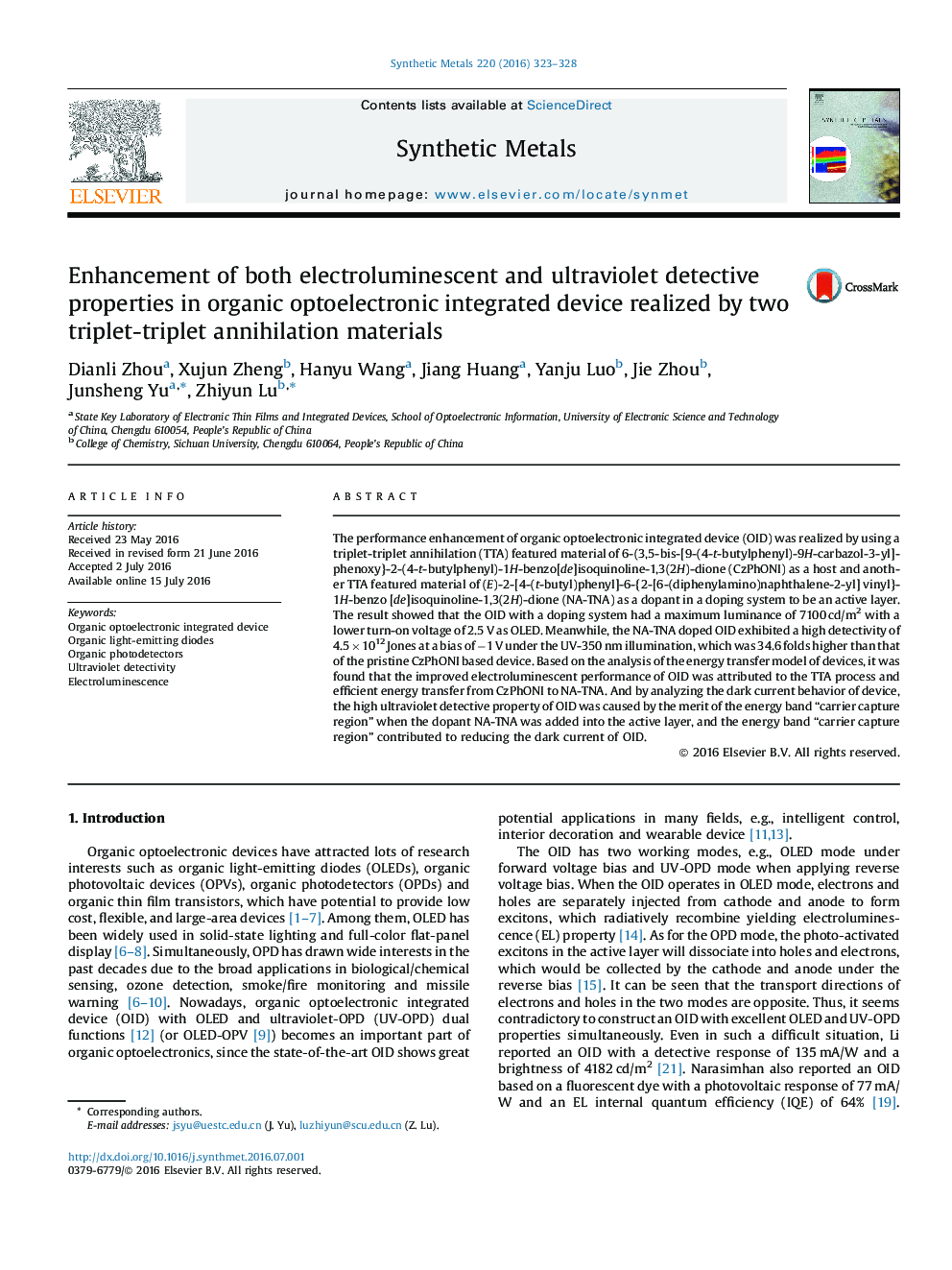| Article ID | Journal | Published Year | Pages | File Type |
|---|---|---|---|---|
| 1440098 | Synthetic Metals | 2016 | 6 Pages |
•A high performance dual functional organic integrated device (OID) was fabricated.•The doped OID exhibited 5.1 folds enhancement of luminance than that of the controlled OID.•The doped OID had an enhanced ultraviolet detectivity of 4.5×1012 Jones due to the reduced dark current.
The performance enhancement of organic optoelectronic integrated device (OID) was realized by using a triplet-triplet annihilation (TTA) featured material of 6-(3,5-bis-[9-(4-t-butylphenyl)-9H-carbazol-3-yl]-phenoxy}-2-(4-t-butylphenyl)-1H-benzo[de]isoquinoline-1,3(2H)-dione (CzPhONI) as a host and another TTA featured material of (E)-2-[4-(t-butyl)phenyl]-6-{2-[6-(diphenylamino)naphthalene-2-yl] vinyl}-1H-benzo [de]isoquinoline-1,3(2H)-dione (NA-TNA) as a dopant in a doping system to be an active layer. The result showed that the OID with a doping system had a maximum luminance of 7100 cd/m2 with a lower turn-on voltage of 2.5 V as OLED. Meanwhile, the NA-TNA doped OID exhibited a high detectivity of 4.5 × 1012 Jones at a bias of −1 V under the UV-350 nm illumination, which was 34.6 folds higher than that of the pristine CzPhONI based device. Based on the analysis of the energy transfer model of devices, it was found that the improved electroluminescent performance of OID was attributed to the TTA process and efficient energy transfer from CzPhONI to NA-TNA. And by analyzing the dark current behavior of device, the high ultraviolet detective property of OID was caused by the merit of the energy band “carrier capture region” when the dopant NA-TNA was added into the active layer, and the energy band “carrier capture region” contributed to reducing the dark current of OID.
Graphical abstractFigure optionsDownload full-size imageDownload as PowerPoint slide
